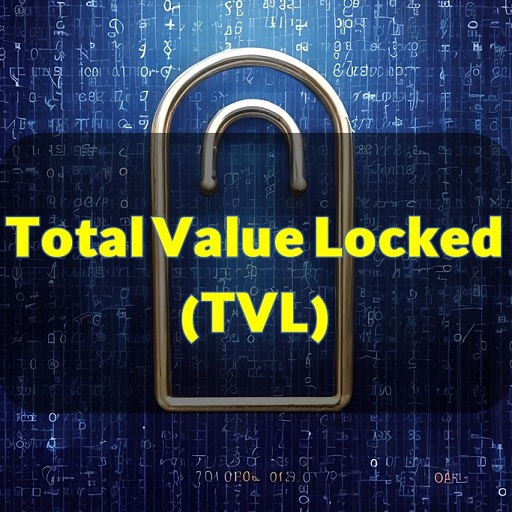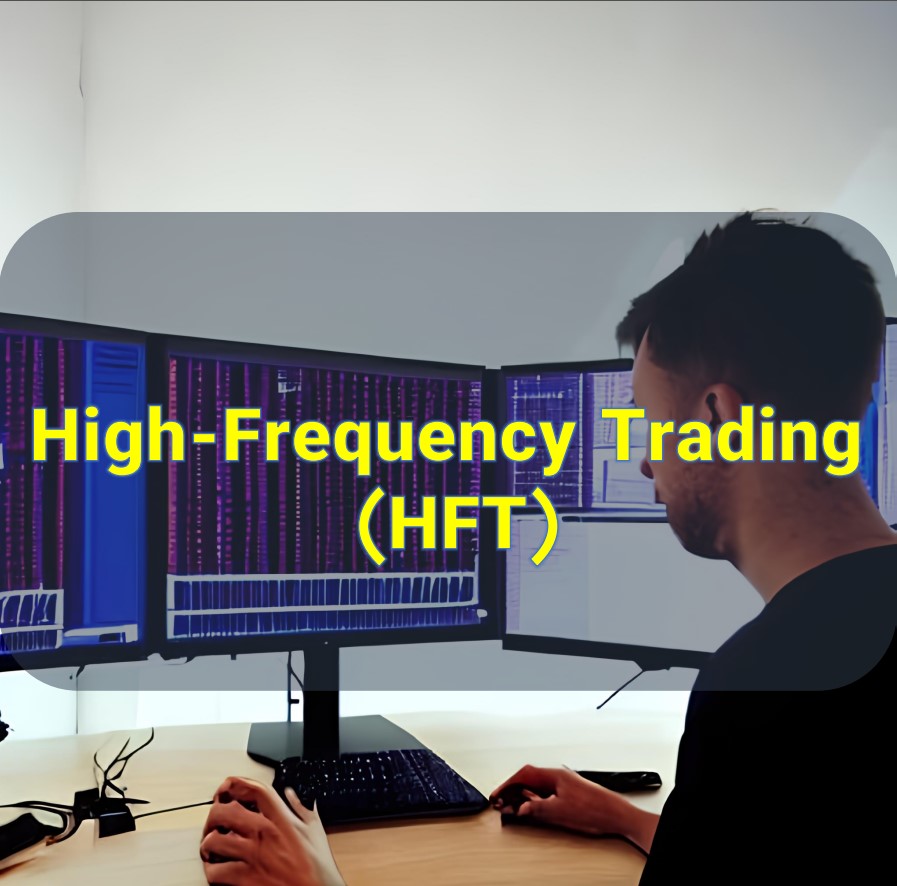Total Value Locked (TVL) – As the world of decentralized finance (DeFi) continues to expand, one metric has gained significant attention and importance: Total Value Locked (TVL). In this article, we will explore what TVL represents, its significance in the DeFi ecosystem, and how it has shaped the landscape of decentralized finance. So, let’s dive in and unravel the intricacies of Total Value Locked.
What is Total Value Locked?
Total Value Locked (TVL) is a metric commonly used in the cryptocurrency and decentralized finance (DeFi) space to measure the total amount of assets locked in a particular protocol or platform. TVL represents the combined value of all the tokens, cryptocurrencies, or other assets that are deposited and utilized within a specific DeFi protocol.
TVL is an important metric as it provides insights into the overall adoption and popularity of a DeFi platform. It demonstrates the level of trust and confidence users have in the protocol, as well as the amount of economic activity happening within it. Generally, a higher TVL indicates a larger user base and a greater amount of assets being utilized within the protocol.
To calculate TVL, the total value of each asset locked within the protocol is determined by multiplying the quantity of each asset by its current market price. These values are then summed up to obtain the total value locked in the protocol.
It’s worth noting that TVL is a dynamic metric that can fluctuate frequently as users deposit or withdraw assets from the protocol. Therefore, TVL is often used as a snapshot of a protocol’s growth and popularity at a specific point in time, rather than a constant measure.
Understanding the Significance of TVL
Total Value Locked (TVL) is a significant metric in the cryptocurrency and decentralized finance (DeFi) space due to several reasons:
1. Adoption and Growth: TVL provides insights into the adoption and growth of a DeFi protocol. A higher TVL indicates that more users are depositing their assets into the protocol, demonstrating increased interest and trust in the platform.
2. Protocol Health: TVL is often seen as an indicator of the health and stability of a DeFi protocol. A higher TVL suggests that the protocol has a robust user base and is attracting substantial liquidity, which can contribute to its overall sustainability.
3. Economic Activity: TVL reflects the amount of economic activity happening within a DeFi protocol. It showcases the assets being utilized for various purposes like lending, borrowing, yield farming, or liquidity provision. A higher TVL implies a greater amount of assets actively participating in the protocol’s ecosystem.
4. Comparative Analysis: TVL enables comparison between different DeFi protocols. It helps investors, users, and analysts gauge the relative popularity and success of various platforms. Higher TVL indicates that a protocol is capturing a significant share of the market and potentially offering attractive opportunities.
5. Risk Assessment: TVL can provide insights into the risk associated with a DeFi protocol. Since TVL represents the value of assets locked within the protocol, it gives an idea of the potential losses or gains in the event of a security breach, smart contract vulnerability, or other risks. A higher TVL might imply higher risk exposure, prompting users and investors to evaluate the security measures and risk management practices of the protocol.
It’s important to note that while TVL is a valuable metric, it should not be the sole factor for assessing the quality or potential of a DeFi protocol. Other factors like security audits, governance mechanisms, team expertise, community engagement, and utility of the underlying protocol should also be considered for a comprehensive evaluation.
How TVL is Calculated
TVL (Total Value Locked) is calculated by determining the total value of assets locked within a specific DeFi protocol or platform. The calculation involves multiplying the quantity of each asset by its corresponding market price and summing up these values. Here’s a step-by-step explanation of how TVL is calculated:
1. Identify the Assets: Determine the list of assets that are locked or deposited within the DeFi protocol. These assets can include cryptocurrencies, tokens, or other digital assets supported by the protocol.
2. Retrieve Market Prices: Obtain the current market prices for each of the assets locked within the protocol. Market prices can be obtained from various sources such as cryptocurrency exchanges, decentralized exchanges, or price aggregators.
3. Calculate Asset Values: Multiply the quantity of each asset locked within the protocol by its respective market price. This calculation provides the total value of each asset within the protocol.
4. Sum up the Values: Add up the values calculated in the previous step for all the assets to obtain the individual total values of each asset.
5. Determine TVL: Finally, sum up the total values of all the assets to get the Total Value Locked (TVL) of the protocol. This value represents the combined worth of all the assets locked within the DeFi protocol.
It’s important to note that the TVL is a dynamic metric that can change frequently as users deposit or withdraw assets from the protocol. To capture the current TVL, real-time or regularly updated market prices should be used. Additionally, TVL can vary depending on the methodology and data sources used by different platforms or analytics providers.
TVL and Its Impact on DeFi Projects
TVL (Total Value Locked) has a significant impact on DeFi projects in several ways:
1. Visibility and Credibility: A high TVL attracts attention and increases the visibility of a DeFi project. It demonstrates that users trust the protocol and are willing to lock their assets within it. A high TVL can enhance the project’s credibility and attract more users, investors, and strategic partnerships.
2. Liquidity and User Experience: TVL directly influences the liquidity available within a DeFi protocol. Higher TVL implies more assets are available for lending, borrowing, trading, or other activities. Increased liquidity enhances the user experience by providing ample opportunities for transactions, lower slippage, and competitive interest rates.
3. Yield Opportunities: DeFi protocols often offer yield farming or staking opportunities where users can earn rewards for locking their assets. A higher TVL typically leads to more attractive yield opportunities as there is a larger pool of assets generating returns. This can incentivize users to participate, driving further growth in TVL.
4. Governance and Decision Making: In many DeFi projects, TVL plays a crucial role in governance and decision-making processes. Higher TVL grants more voting power to participants, allowing them to influence protocol upgrades, parameter changes, or allocation of resources. Therefore, a higher TVL can give users a greater say in the project’s future direction.
5. Investment and Partnerships: TVL can influence investment decisions and partnerships. Investors and venture capital firms often consider the TVL as an important factor when evaluating DeFi projects for potential funding or collaborations. A higher TVL can attract more interest from the investment community and open doors to strategic partnerships or integrations with other protocols.
6. Security and Auditing: TVL can impact the security and auditing practices of a DeFi project. Higher TVL signifies a larger pool of assets at risk, making security measures and smart contract audits even more critical. Projects with substantial TVL are often under greater scrutiny, leading to more rigorous security assessments and audits to ensure the safety of users’ funds.
Overall, TVL serves as a key metric for measuring the success, adoption, and attractiveness of a DeFi project. It affects various aspects of the project, including visibility, liquidity, yield opportunities, governance, investments, partnerships, and security considerations. DeFi projects aim to increase their TVL as it signifies growth, trust, and economic activity within the ecosystem.
Analyzing TVL Trends and Patterns
Analyzing TVL (Total Value Locked) trends and patterns in the DeFi space can provide valuable insights into the growth, adoption, and dynamics of specific protocols or the overall ecosystem. Here are some key aspects to consider when analyzing TVL trends:
1. Historical Data: Examining historical TVL data allows you to identify patterns and trends over time. Plotting the TVL values on a graph and observing the changes can reveal growth spurts, periods of consolidation, or potential correlations with market events, token launches, or protocol updates.
2. Comparative Analysis: Comparing the TVL of different protocols can provide insights into their relative performance and popularity. Analyzing TVL ratios between protocols, tracking market share trends, or comparing growth rates can help identify leaders, emerging contenders, or areas of concentration within the DeFi ecosystem.
3. TVL Growth Rate: Assessing the rate of TVL growth is essential for understanding the pace of adoption and protocol expansion. Calculating the percentage increase in TVL over specific periods (e.g., daily, weekly, monthly) can highlight growth spurts, inflection points, or potential market trends that are driving user interest and participation.
4. TVL Composition: Analyzing the composition of TVL can reveal the distribution of assets and their relative importance within a protocol. Understanding which assets contribute the most to the TVL can provide insights into user preferences, investment trends, or the popularity of specific functionalities within the protocol.
5. Seasonality and Market Conditions: Consider seasonal patterns or market conditions that might influence TVL trends. For example, certain events like yield farming opportunities, token airdrops, or network upgrades may attract temporary increases in TVL. Monitoring such events and their impact on TVL can help identify short-term trends and potential market dynamics.
6. TVL in Conjunction with Other Metrics: Combine TVL analysis with other metrics such as trading volumes, user activity, token price movements, or governance participation rates to gain a more comprehensive understanding of a protocol’s performance. Cross-referencing multiple metrics can provide deeper insights into user behavior, project health, or potential market trends.
7. External Factors: Consider external factors that may influence TVL trends, such as regulatory changes, market sentiment, macroeconomic conditions, or technological advancements. Understanding the broader landscape and external influences can help interpret TVL trends in a more informed manner.
Remember that TVL is a dynamic metric that can change rapidly. It’s crucial to analyze TVL trends over different timeframes and in conjunction with other relevant metrics to form a well-rounded analysis. Furthermore, it’s important to exercise caution and not solely rely on TVL as the sole determinant of a project’s success, as it’s just one piece of the larger puzzle in evaluating DeFi protocols.
The Role of TVL in Assessing DeFi Protocols
TVL (Total Value Locked) plays a significant role in assessing the performance, adoption, and potential of DeFi protocols. Here are some key aspects where TVL is valuable in evaluating DeFi protocols:
1. Adoption and User Activity: TVL serves as a measure of a protocol’s adoption and user activity. A higher TVL indicates a larger user base and demonstrates that users are willing to lock their assets within the protocol. It implies that the protocol has gained traction and is attracting interest from the DeFi community.
2. Market Share and Competition: TVL can be used to assess a protocol’s market share and competitive positioning within the DeFi ecosystem. Comparing TVL across different protocols allows for a relative analysis of their popularity, growth, and ability to attract liquidity. Higher TVL suggests a protocol has captured a larger portion of the market.
3. Protocol Health and Sustainability: TVL is often viewed as an indicator of a protocol’s health and sustainability. A higher TVL signifies that the protocol has a robust user base and attracts a significant amount of assets. It suggests that the protocol is providing value to users and has the potential to generate revenue or fees, contributing to its long-term viability.
4. Liquidity and Efficiency: TVL directly impacts the liquidity available within a DeFi protocol. Higher TVL typically translates to greater liquidity, enabling users to engage in various activities like lending, borrowing, trading, or yield farming. Ample liquidity improves the efficiency and functionality of the protocol, providing better user experiences and minimizing price slippage.
5. Security and Risk Assessment: TVL influences the security and risk assessment of a DeFi protocol. As TVL increases, the value at risk also grows, making the protocol a potentially more attractive target for attackers. Higher TVL emphasizes the importance of robust security measures, thorough auditing processes, and risk management practices to safeguard users’ assets.
6. Investor Confidence and Partnerships: TVL can impact investor confidence and attract strategic partnerships. A high TVL indicates that a protocol has gained trust and credibility among users, making it more appealing to potential investors and collaborators. Investors and partners often consider TVL as a key indicator of a project’s potential success.
7. Governance and Decision Making: In many DeFi protocols, TVL is tied to governance mechanisms. A higher TVL often grants more voting power to participants, allowing them to influence the direction and decision-making process of the protocol. It provides a voice to users with substantial stake, promoting decentralization and community-driven governance.
While TVL is a valuable metric, it should be considered alongside other factors such as protocol functionality, security audits, team expertise, tokenomics, and user experience. It is crucial to take a holistic approach when assessing DeFi protocols and not rely solely on TVL as the sole determinant of a protocol’s quality or potential.
TVL and Its Relationship with Liquidity
Liquidity is a fundamental aspect of DeFi, and TVL plays a significant role in assessing liquidity levels within a protocol. Higher TVL often translates to deeper liquidity pools, allowing users to trade with minimal slipp
age and facilitating the efficient movement of assets within the ecosystem.
Challenges and Limitations of TVL as a Metric
While TVL is a widely used metric, it does come with certain limitations. Firstly, TVL does not account for the quality or security of the underlying assets. Second, TVL can be influenced by short-term market fluctuations and volatile asset prices. Lastly, TVL does not consider the distribution of assets among users, which can impact the overall health and stability of a protocol.
TVL vs. Market Cap: Comparing Metrics
TVL and market capitalization (market cap) are often used in parallel to assess the value and growth of DeFi projects. While TVL focuses on the assets locked within a protocol, market cap represents the total value of a token or cryptocurrency in circulation. Both metrics provide unique insights into different aspects of the DeFi ecosystem and are valuable for making informed investment decisions.
The Future of TVL in DeFi
As the DeFi space continues to evolve, TVL is expected to remain a crucial metric for evaluating the success and adoption of decentralized finance projects. With the growing interest in DeFi, it is anticipated that TVL figures will continue to rise, reflecting the increasing value and utility of these platforms.
Conclusion
Total Value Locked (TVL) stands as a fundamental metric in the world of decentralized finance. It showcases the trust users place in DeFi protocols and serves as a barometer for measuring their success. By understanding TVL and its significance, investors and users can navigate the DeFi landscape more effectively, identifying promising projects and contributing to the growth of this exciting sector.
FAQs
How often is TVL updated?
TVL figures are typically updated in real-time or at regular intervals, depending on the DeFi platform or analytics provider.
Does TVL include all assets within a DeFi protocol?
Yes, TVL encompasses all assets locked in smart contracts, including cryptocurrencies, stablecoins, and other tokens.
Can TVL decrease?
Yes, TVL can decrease if users withdraw assets from a protocol or if there is a significant market downturn.
Are there any risks associated with investing in high TVL protocols?
While high TVL is often indicative of a popular protocol, it does not guarantee its security or long-term viability. Investors should conduct thorough research and consider other factors before making investment decisions.
How can TVL be used to identify promising DeFi projects?
Comparing TVL figures over time and between different protocols can help identify projects with sustained growth, strong user adoption, and a thriving ecosystem.







